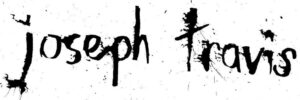For several years, I worked at a school in the Design Technology Department. The preparation area was so large that they had accumulated junk for longer than I had been alive. Most the machinery is older than I am, including a router I found that was repaired in 1984, and I am only a little older than that repair, which gave the name of the shop which I do remember and is now a defunct business.
In fact there was a sheet of white perspex made by the ICI in the material racks, full sized 2440 by 1220mm (8ft by 4ft) and ICI hasn’t really made perspex since the 1980s, and the largest sized sheet I could order was 1000 by 600 mm
Cleaning the racks, I found this curious sign of Craft, I had not long finished my Masters by Research in the Digital Craft Department at the Manchester School of Art.

A sign with a hole in one corner with a serifed “CRAFT” engraved through the top plastic and into the white core
It really is a tale of educational reform
When my Grandfather was in school, local schools had become separated for boys into three subjects: building sciences, agricultural sciences and engineering sciences. My grandfather went to the school that taught building sciences, he became a bricklayer.
Later, all schools offered handicrafts in the form of woodworking, metalworking, etc. These were looked down on as non-academic subjects for the kids that weren’t smart enough. The school I taught at built their workshops in the 1960s. They had also done fibreglass at one point, and there were photos of kayaks being built in the workshop space.
The next educational reform aimed at making the subject more academic. Every students made had to be designed. So all subjects were combined in an umbrella term of Craft, Design and Technology. There was resistance to the change, and they never really saw the subject as anything other than for the less academic students.

Still of me standing in in the design department for a video I made on making pottery tools
The late 1980s brought about major educational reforms, control was taken from local councils for standards, Ofsted created and along with it, the national curriculum. Everything in the national curriculum had to be academically justified.
Craft was seen as old-fashioned and untestable. It was cut out of the curriculum, Craft was removed from the name, and the subject was renamed Design and Technology. The subject took on further subjects such as electronics, graphic design, systems and control, and working with wood, metals and plastics became Resistant materials.
With the change in name the school cut craft off the sign. When nothing was wasted, the craft went onto the material racks to be sold to a student for their project, only for me to find it almost 30 years later. Weirdly, I never found the other part of the sign, which had probably been used as materials at some point.
In my own education, I took Systems and Control, which I finished in the year 2000. Systems and Control had a few different pathways from pneumatics to electronics and mechanisms, and someone told me it was the hardest route to do Design Technology for GCSE. My main focus in the subject was electronics as it is the only subject our substitute teacher knew about (which was proven by the accident where she almost cut off her thumb on a bandsaw.)
Design Technology is now very academic with pathways seen as going into design, engineering or architecture. Students I taught have gone into product design, automotive design and architecture. Weirdly, buildings have been built from designs made in classes. And all the A-level students I taught should have finished their degrees as I left in 2020.
But when I taught it, I missed that element of craft, being able to watch students improve through repetition; there wasn’t that space or time for those that needed it. The exams were full of technical terms, meaning it was hard to learn for students whose first language isn’t English, yet it was sold to them as a subject where they could make things. Whilst I was working there, we did change to courses that relied more on coursework, and either had no written exam for A-level or a written exam and a practical exam for GCSE, both of which the weighting was heavily on coursework.
I can’t help but think that Education cut out the craft of making, and I think we need it back for the students that really need those hands-on skills. and create courses that are first focused on craft and skills and educate a new generation of craftspeople that care.
